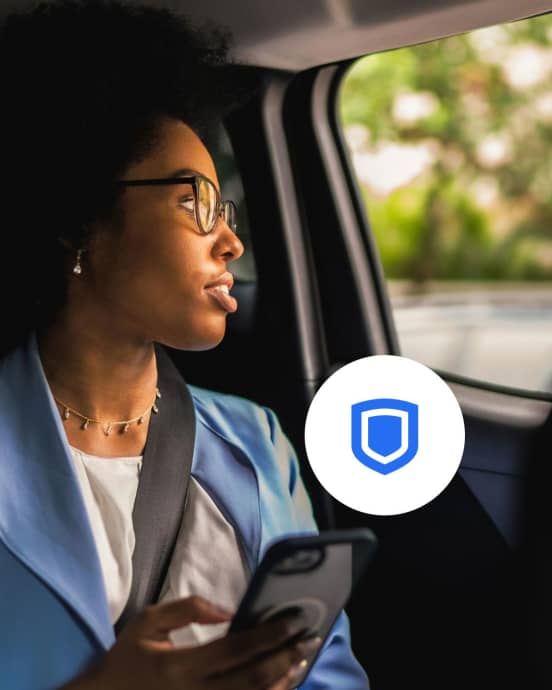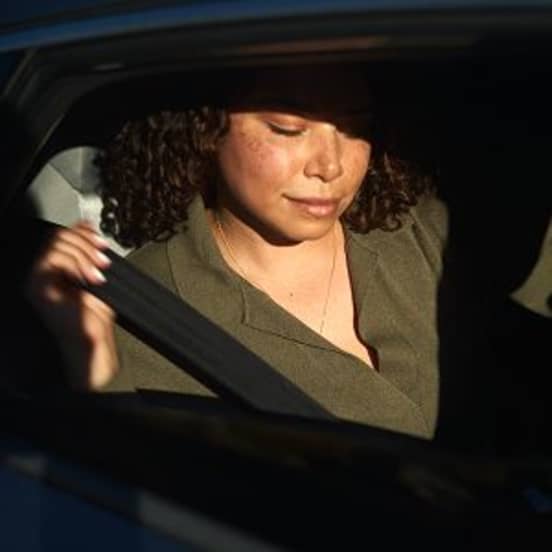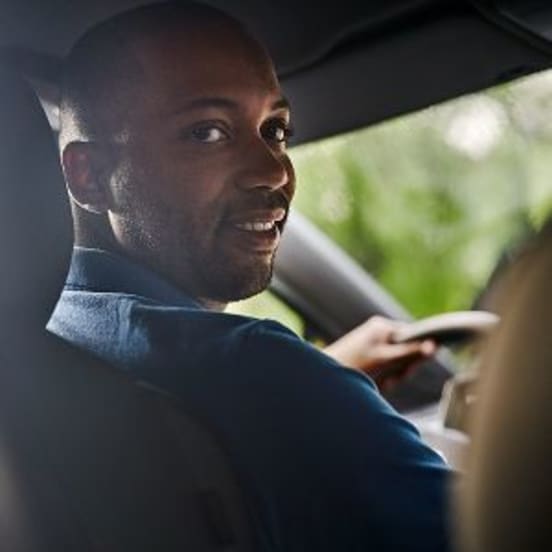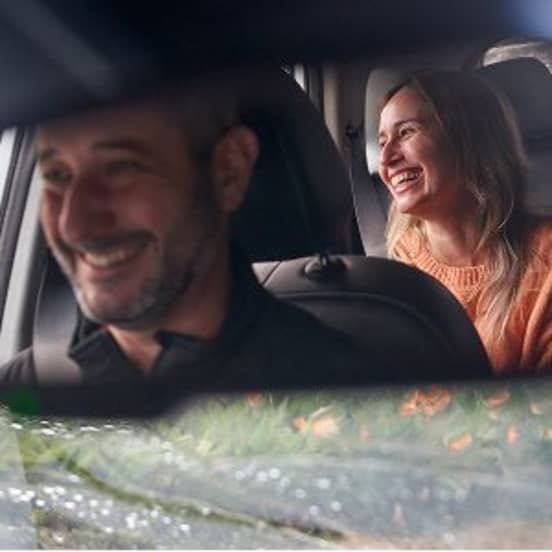Our commitment to safety
At Uber, we stand for safety. Safety is not just a feature—it’s a foundation. That’s why we invest in innovative technologies, robust policies, and expert partnerships that prioritize women’s safety at every step of their journey. We are steadfast in our commitment to building a platform where women feel comfortable, safe, and in control.
Pioneering technology to help keep users safe
From foundational safety tools to industry-first features, we have built safety into every trip. Our safety features and services are informed by our users and expert safety partners, and developed by a robust internal team dedicated to keeping riders and drivers safe.
All drivers undergo a thorough background check and driving history screening before they’re able to take their first trip, and this screening is re-run each year. Uber also uses technology to continuously check criminal records for new arrests. From 2021-2022, more than 750,000 prospective drivers didn’t pass our multistep safety screening, and we removed 185,000 from our platform as a result of continuous checks.
Riders receive key details before the ride—license plate, vehicle type, and driver’s name—and can set a PIN to confirm they’re getting in the right car. GPS tracking shows the trip route in real time. Riders can share their location with loved ones, and RideCheck helps detect unexpected stops or route changes. Riders can record audio and drivers can record both audio and video—providing added peace of mind. Safety tools are easy to access in the app and customizable. If help is needed, users can contact our 24/7 safety support or use the in-app emergency button.
After the trip, privacy is protected by anonymizing phone numbers and addresses so riders and drivers can rate their experience and report any concerning feedback to Uber.
Building safety at every step
2009–2014
From day one, Uber brought new safety features to the transportation ecosystem that didn’t exist before, such as GPS tracking, two-way ratings, driver screening, and 24/7 support.
2015
To guide our long-term safety policies and feature development, we established the Uber Safety Advisory Board, bringing together leading experts in women’s safety, law enforcement, and road safety.
2016
Launched Real-Time ID Check, an industry-first in the US, to verify driver identity through selfies before going online, adding a new layer of protection for both drivers and riders.
2017
Launched Share My Trip, allowing riders and drivers to let loved ones follow their ride in real time, and our Driving Change initiative—a long-term commitment to support gender-based violence prevention organizations and work with them to help promote safety on our platform.
2018
Partnered with RALIANCE and the Urban Institute to develop the first-ever sexual assault taxonomy, while also launching new in-app safety features, like the Emergency Button, RideCheck, PIN Verification, and Address Anonymization.
2019
Published our first-ever U.S. Safety Report—an industry-first step toward greater transparency in ridesharing.
2020–2021
Partnered with RAINN to launch the Uber Survivor Resources Hotline and Fund, launched driver education on sexual misconduct, and added Audio Recording for additional peace of mind.
2022–2023
Expanded safety support with Live Help from ADT, released our second U.S. Safety Report, and committed an additional $10M over five years to organizations addressing gender-based violence through our global Driving Change initiative.
2024–2025
Launched Safety Preferences to let riders customize in-app safety features, in-app video recording for drivers, and published our third U.S. Safety Report to track progress and uphold transparency.

women worldwide have experienced physical or sexual violence
Source: WHO
Every 68 seconds, an American is sexually assaulted
Source: RAINN
trips were taken per day in 2024
of trips ended without a safety incident

A framework for prevention
We firmly believe that when travel is made safer for women, everyone benefits. That’s why we’ve built industry-leading safety features, launched awareness campaigns, and partnered with women’s safety and sexual assault prevention experts to help prevent harm before it happens.
Driver Education: We’ve deployed sexual assault and misconduct education to all drivers in the United States. These educational resources, developed in partnership with RAINN, cover a wide range of interactions including respecting privacy and personal space, conversational boundaries, sexual violence awareness and bystander intervention, and offer strategies to promote safety on the Uber app.
Industry Sharing Safety Program: This initiative, launched in 2021, enables companies to exchange basic information about drivers and delivery people who have been deactivated for serious sexual assault or physical assault fatalities to help prevent these individuals from operating on another platform. We know that this program not only improves safety across the industry but supports survivors by giving them peace of mind knowing there’s a way to help prevent offenders from moving between platforms and potentially harming others.
Matching Technology: To help support safe and comfortable trips, Uber’s matching algorithm may factor in additional signals in certain situations. For instance, when a rider who doesn’t use Uber frequently requests a late-night trip in an area known for nightlife—such as a city’s entertainment district—the algorithm may prioritize drivers with more experience on the platform, a strong record of late-night trips, and positive rider feedback. Taking these considerations into account can help contribute to fewer on-trip incidents and a better overall experience. This technology shows a clear safety benefit - reducing the critical sexual assault and misconduct report rate by 10%* since its full launch in 2022.
Our Taxonomy: To better understand and address the types of sexual misconduct and assault, we partnered with RALIANCE in 2018 to create the first-of-its-kind Sexual Assault and Misconduct Taxonomy. This established an open-source, uniform standard for classifying sexual assault and misconduct into 21 categories, ranging from staring/leering, flirting, and comments about appearance to non-consensual sexual penetration. This tool—now used across the rideshare industry—helps us classify and analyze reports, enabling more informed, consistent, and proactive safety measures and policies.

Transparency that drives accountability
We have embraced transparency as a necessary tool to drive accountability and change. In 2019, we released our first US Safety Report, setting a new standard—not just at Uber, but across the industry. Our reports cover the most serious safety incidents that occur in relation to our app—motor vehicle fatalities, physical assault fatalities and sexual assault.
These incidents are statistically rare—99.9998% of trips occur without any of the safety incidents reflected in our Safety Reports—and as reflected in our most recent Safety Report we’ve seen a 44% decline in the rate of reported sexual assault on the platform since our first Safety Report.
Our Safety Reports rely on the Sexual Assault and Misconduct Taxonomy created by RALIANCE. We worked closely with women’s safety advocates to inform our approach to reporting on sexual assault—ensuring that any data published met the highest data quality standards (including classification accuracy, reliability and consistency). As a result, each Safety Report covers the five most severe categories of sexual assault.
Supporting survivors at every step
We are committed to preventing and addressing violence against women—both on the Uber platform but also in the communities that we serve.
With millions of trips happening every day, we know that no platform, company, or organization that brings people together in a physical space is immune to real-world risks. Globally, nearly 1 in 3 women will experience physical or sexual violence in their lifetime. We recognize that gender-based violence is a serious public health issue that affects every community, including ours.
When we receive a report of an assault, we make it easy for survivors to get the support they need. Our trained safety team is available 24/7, with 10 ways to report an issue. We’ve partnered with RAINN to launch a dedicated survivor hotline and fund, offering trauma-informed care and access to resources that support healing.
In many of the communities we serve, survivors often turn to Uber as a lifeline—whether it’s getting to a shelter, hospital, or vital services. That’s why in partnership with local organizations, we provide free rides to support access to safety and care. By meeting this critical transportation need, we’re helping improve outcomes and save lives.
To help drive a broader, lasting impact, we’ve committed $15 million through our Driving Change program to support global NGOs working to prevent violence against women—on our platform and beyond. Since 2017, we’ve partnered with more than 25 organizations worldwide. Together, we’ve strengthened reporting and incident response, developed trauma-informed resources, and implemented awareness campaigns reaching millions of people around the world.
Driving Change partners
Frequently asked questions
- What does Uber’s background check for drivers include?
Every US driver undergoes a thorough screening before their first trip, including a motor vehicle records review and a criminal history background check. Uber also reruns criminal and motor vehicle checks each year, regardless of whether there is a statute or regulation requiring us to do so. We use technology to continuously check new criminal records.
- What happens when someone reports a sexual assault on the platform?
When someone reports a sexual assault on Uber, we respond quickly, treat the report with care, and work to prevent a future incident. Specialized safety agents—who receive over 200 hours of training informed by safety experts—handle these reports with a trauma-informed approach.
When we receive a report of a sexual assault, our teams take immediate steps such as suspending the account of the accused party so they can’t take trips, gathering trip data (like GPS, timestamps, or in-app communication), and contacting all involved parties. Agents are empowered to take swift action, including permanent deactivation.
Survivors are offered dedicated support, including access to our 24/7 Hotline and Survivor Support Fund—developed in partnership with RAINN. Reporting to law enforcement is always the survivor’s choice, and if they decide to report, our law enforcement response team is available around the clock to assist with investigations.
- How is Uber using data to better understand and prevent incidents of sexual harassment or assault on the platform?
We believe that transparency is a critical tool in improving safety. That’s why Uber was the first in the industry to publish a Safety Report, sharing data on the most serious safety incidents, including sexual assault.
We partnered with RALIANCE to create the Sexual Assault and Misconduct Taxonomy—a first-of-its-kind, open-source framework that classifies unwanted sexual experiences into 21 categories. This tool has helped us more accurately track and analyze trends, improve how we respond to reports, and identify areas where we can strengthen prevention efforts.
This data has directly informed feature development, survivor support resources, driver education, and awareness campaigns. And it’s working: across our three Safety Reports, we’ve seen a 44% reduction in the rate of the most severe types of sexual assault reported on the platform.
- Why did Uber only release 5 categories of sexual assault in its Safety Reports?
As explained in our first Safety Report, we focus on the 5 most severe categories of sexual assault to ensure the highest level of accuracy, consistency, and data quality. These categories align with national research standards and reflect the most serious incidents outlined in our taxonomy, allowing for more reliable reporting and meaningful comparisons.
- What factors are considered in your matching process that help promote safety?
Millions of people around the world are logged on to our app at any given moment, and that means millions of possible matches between riders and drivers. Many factors play a role in finding the best match between a rider and driver, like distance and traffic.
When our matching technology incorporates factors to help promote safe, comfortable trips, it may consider factors like publicly available geographic data, a user’s ride history, ratings, and previous feedback from other riders or drivers. The technology does not consider race, gender, or age when evaluating a match.
- What has Uber done to help ensure the integrity of its matching technology?
We consulted with various women’s safety, civil rights, and privacy organizations to gather feedback about incorporating additional signals in certain situations to promote safe and comfortable trips.
We also worked with a third party firm to evaluate whether this technology impacted specific demographic groups more than others. They found minimal impact on rider wait times and to driver trips and earnings based on gender and race/ethnicity.

*This is an estimated reduction rate for the five most critical categories of sexual assault, discussed in our Safety Report, and relies upon common scientific methods of analysis. While our safety team regularly makes improvements to our technology, measuring its exact impact on rare safety incidents, especially at a particular point in time, is difficult.
1 Appendix 1: Why data standards matter, Uber US Safety Report 2017-2018
About
